An Invitation to Falls Church City’s ‘Mysterious’ Log Cabin Scout House

A curious invitation came by email.
Following our July 9 story about upgrades to Berman Park and the City’s plans to connect its greenways, I received an invitation to take a personal tour of the historic log cabin “Scout House” at 128 South Spring St, Falls Church.
I had described a “walking tour” through Berman Park and the pleasant connection of trails leading to the “mysterious” log cabin scout building along Tripps Run: “From Berman Park, a walking/bike path through the Scout Building Association’s grounds – where the group’s iconic and mysterious log-cabin structure sits – provides a perfect culmination to the quiet stroll along Tripps Run. A deer is spotted foraging down by the stream.”
In response, the Scout House’s Building Manager, John Murphy – the site’s overseer, answering to the Board of the Falls Church Scout Building Association (FCSBA), of which he is a member – generously invited me on a personal tour to see what the historic site’s all about and unveil its mysteries.
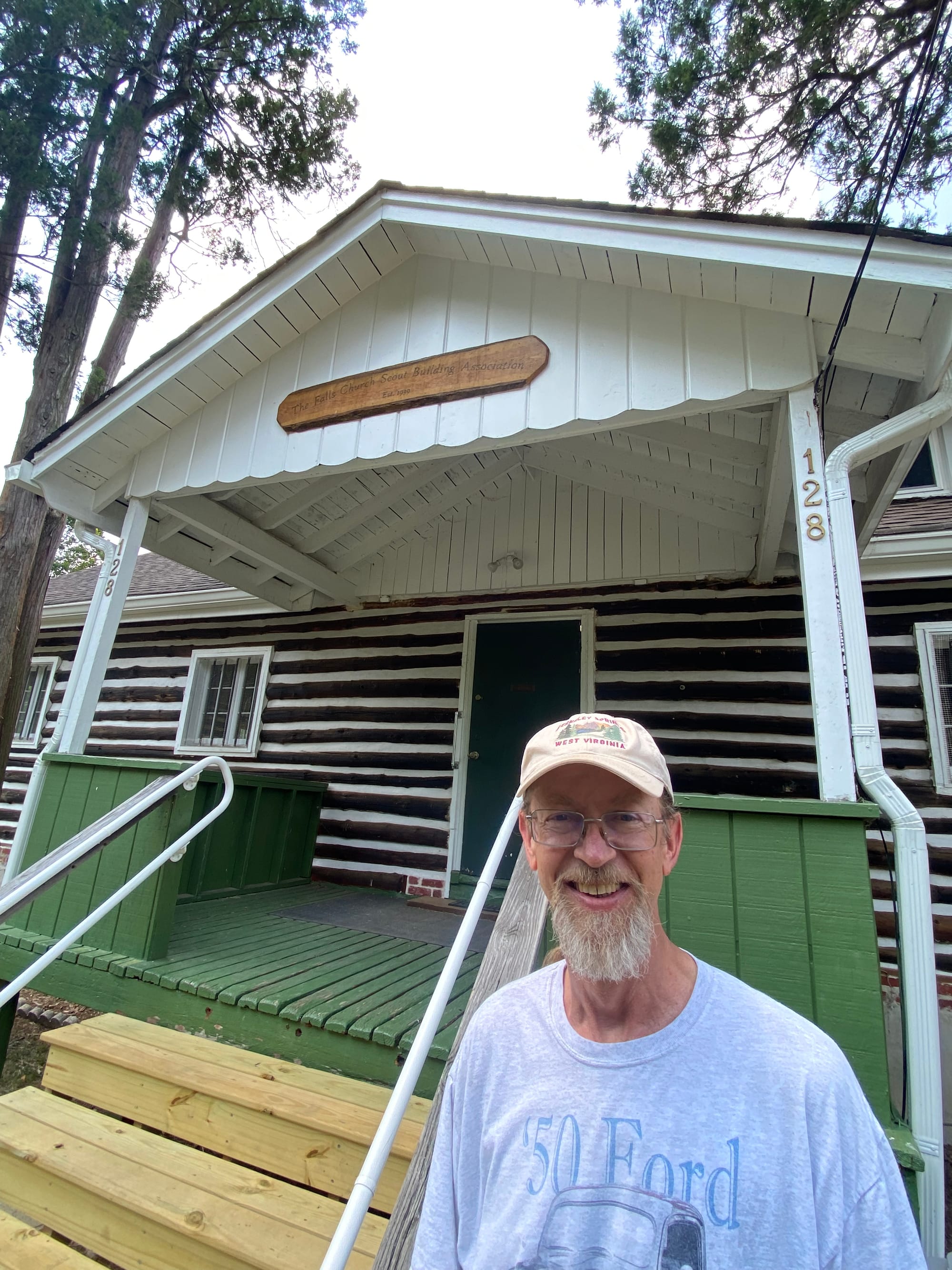
History of the Falls Church Scout Building Association (FCSBA)
In 1939, as the Second World War was breaking out in Europe, a renewed emphasis on youth volunteerism and leadership rose across the United States.
In response to the alarming rise of European fascist youth organizations – and especially Germany’s “Hitler Youth” programs – American youth civic groups promoting democratic principles surged in participation.
Americans fondly recalled the Victory Gardens, self-sacrificing rationing efforts of food, gas and fuel, and civilian collection drives for rubber, aluminum and other war essentials that helped the Allies achieve victory by 1918. The Boy Scouts of America – which began in 1910, shortly after the publication of Lord Baden-Powell’s “Scouting for Boys” in 1908 – was poised to take a leading role in such civic action.
In 1939, the Falls Church Scout Building Association (FCSBA) – a “dedicated center of youth education” – launched a drive to fund and build the “Scout House” in Falls Church. For $600 they had purchased the undeveloped 1.1-acre parcel along the Pearson Branch of Tripps Run on South Spring Street.
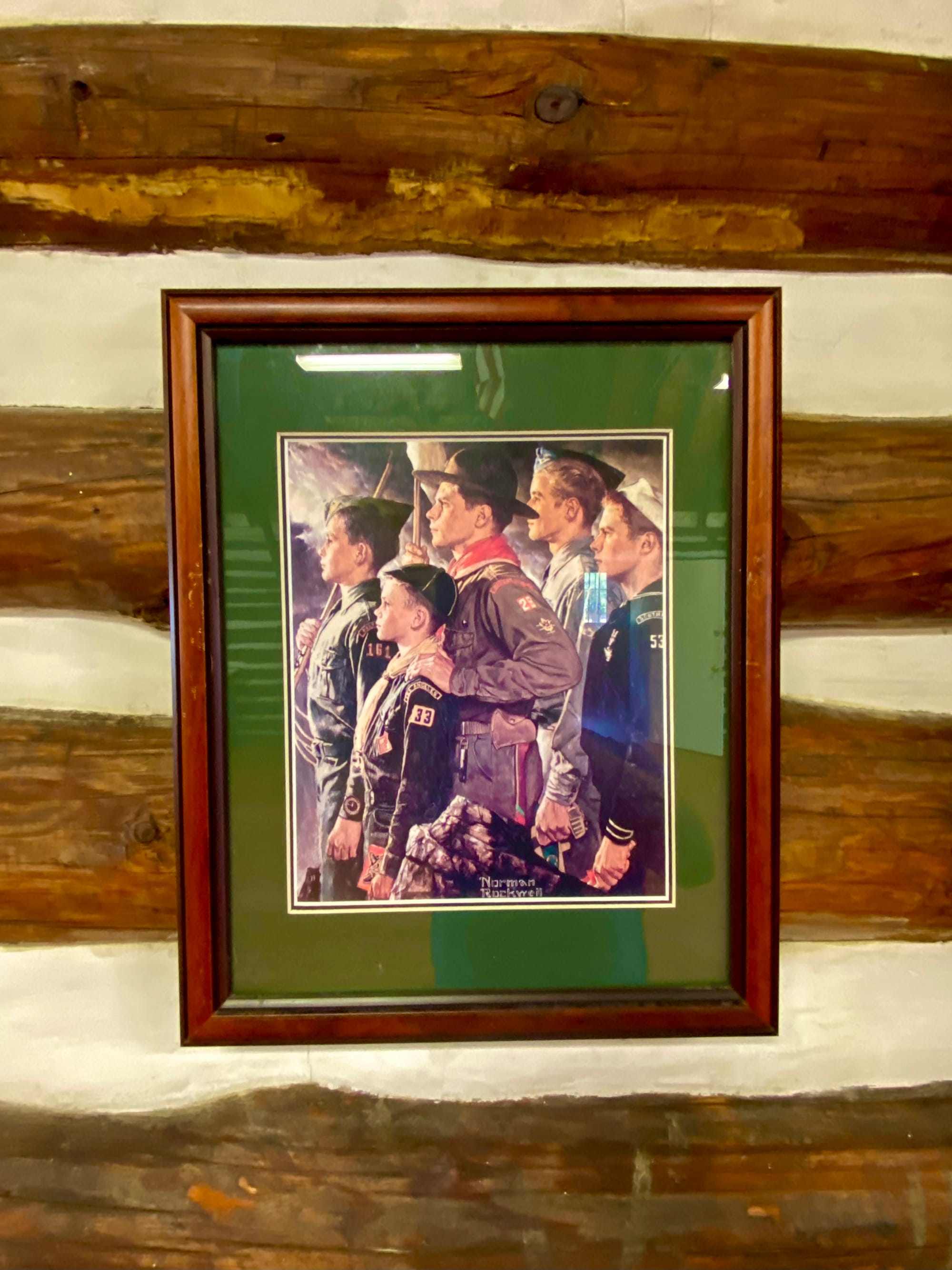
Now they looked to build a rustic log scouting cabin on the site.
A “Scout House History” by Robin Hoehne, issued on the site’s 60th anniversary, recounts what followed: “A.J. Webb who was assisted by Kenton Hamer, builder of the Falls Church Presbyterian Church, and George W. Carlton, who, donated their architectural services, designed the building. Walter Johnson, chairman of the Falls Church Scout Committee, secured pledges, building materials, and labor from businesses and groups throughout the community. Mr. and Mrs. Thomas Turner of Fairfax County donated the logs and stones to build the structure and its fireplace and chimney.”
“When the initial fundraising effort fell short of its goal, 15 local residents guaranteed a loan from the Falls Church Bank for the construction of the Scout House, which began in late 1939 and was completed in early 1940,” Hoehne continues. “By 1942 the Scout House was headquarters to more than 200 scouts from 9 different troops. Scouts collected discarded paper, toothpaste and shaving cream tubes, and old license plates to help reduce the building’s indebtedness. The Scouts’ persistence in fundraising paid off when on June 17, 1945 the Scout Building Association held a mortgage-burning celebration just five years after construction.”
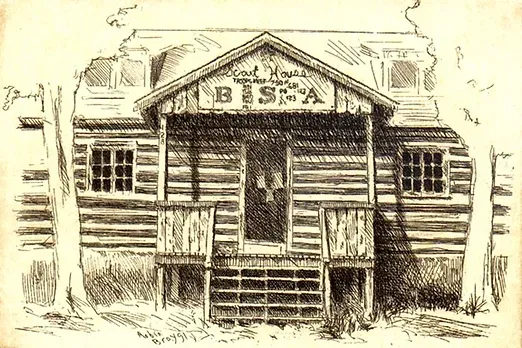
“In addition to the Scouts, other civic groups used the house for social functions, including square dancing. During World War II, the building was made available for the American defense effort as an air-raid shelter, hospital and first aid center. However, its primary purpose has always been to further the objectives of Scouting, which the building has served for 60 years.”
“Over the decades, several generations of Scouts have passed through the log cabin on South Spring Street…. [FCSBA] is a non-profit organization, which owns and maintains the house.... In the City of Falls Church, the log Scout House holds a unique place by recognizing the past and looking toward the future of scouting."
According to the group’s website, “The historic log cabin (known as the "Scout House") was planned, designed, funded, and built by local donors and volunteers who exemplified the principles of scouting.” Maintaining the same “spirit of volunteerism” today as its original founders, the FCSBA “continues to serve a variety of user groups, including scouting organizations, youth groups, educational entities, and other community organizations.”
Interview with the Scout House’s Overseer, John Murphy
The following interview is edited for length and clarity.
[Inside the Scout House’s grand room with fireplace]
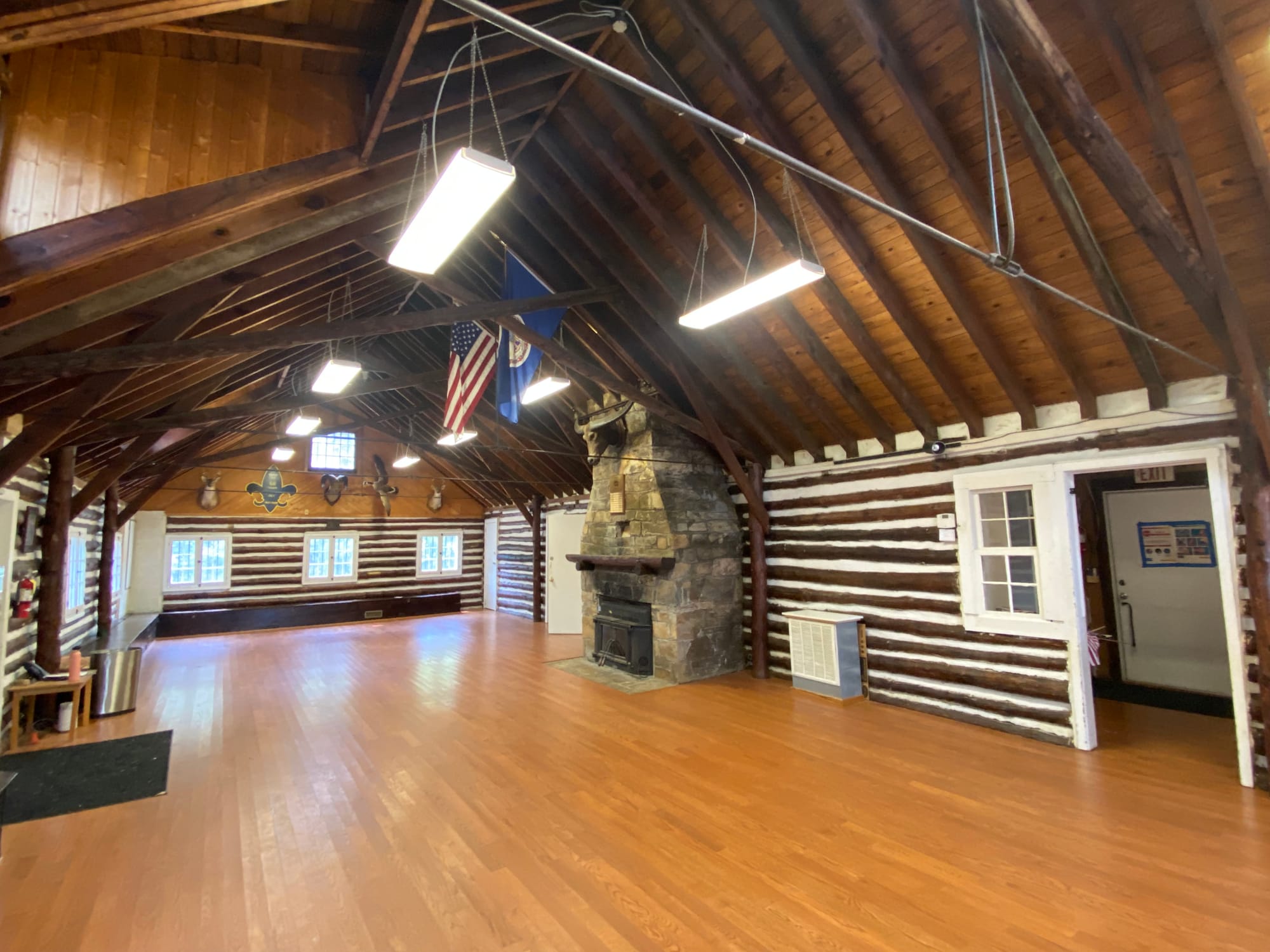
FCI: So, when did you join the Board of FCSBA?
John Murphy: About four years ago when I retired. And it was right at the beginning of Covid. And so we had the opportunity at that point – because there were not many users – to do some major work just to bring the [Scout House’s] systems back up. So, we replaced the floors. A local vendor gave us a really good deal – Carpet Royal right up at the end of the street here. They did a beautiful job on it. We had the roof repaired, plumbing repaired, electrical upgrades, pretty much getting the building into continued good shape over time.
FCI: So this building was built just before the Second World War, right?
JM: Yes. And during the war it was used or was offered for use to the military as a hospital or meeting place or what have you.
FCI: And, was it actually used that way?
JM: To the best of my knowledge. But, I wasn’t around then. [Laughs] I’m reading the old histories on that. Then, for a long time it was a polling place for the City of Falls Church.
FCI: Not now, though?
JM: At least through the ‘90s it was a polling place and I think in the 2000s they switched the locations and cut down the number of precincts. So they moved out of here and also the American Legion and went to the Community Center.
FCI: So since the end of the pandemic, how has business picked up?
JM: We typically operate on a shoestring budget. We don’t have a lot of users. We have Scouting America, one of the local troops, 681, at St. James. This is kind of their headquarters. So, this area back here is all their storage.

[Murphy shows me the storage area.]
FCI: So they hold their meetings and events here at the Scout House?
JM: Yes. The Cub Scouts use it occasionally, more for events than anything, if they’re doing a big outdoor thing.
FCI: And they have to sign up on the calendar?
JM: Yes, they’ll have to contact our User Coordinator to sign up. It’s open to any youth group and most civic organizations as well. [The Falls Church Village Preservation and Improvement Society] VPIS has had some meetings here during Covid when we couldn’t find a house that was big enough.
FCI: I imagine it’s a great place to have a meeting.
JM: It’s not bad. It’s a little rough in the summer, because, as you can tell, there’s no air conditioning [Laughs]. This building would be impossible to air condition. We have the two ceiling fans up there. [Points] I’m considering a whole building fan sometime in the future to draw more hot air out so it could get a bit more use. But most of our groups kind of take the summer off anyway, so it’s not used very often during the summer.
During the school year we have Scouting America, Boy Scouts and Cub Scouts. We have Girl Scouts. We have Brownies. We have American Heritage Girls. There’s an international troop from Hungary. Each international group can have one sponsored unit in the U.S. and the Hungarian troop operates out of the Scout House.
FCI: And that’s through the Boy Scouts?
JM: They’re affiliated with the BSA, but they’re a separate program. My understanding is that a lot of what they do is, the basic leadership program for young people, but also cultural training for the young Hungarians. So, a lot of them are over here with families here for work, etc. And they have a fairly big group. They have 60 or 70 kids here when they use the building. And they use it fairly often on weekends during the school year.
FCI: And how did you come to do this job? Were you a Boy Scout yourself?
JM: I was a Boy Scout. I was in troop 181 in the Seventies, which met in this building and I had always known it was here. I kind of got out of touch with it for a while. I knew some of the people on the Board of Directors. Some of them are local like me. They were born and raised in this area. Others have moved in or have kids in Scouts and they’ve met each other. So, we have a range of Board members. There are nine of us.
FCI: And did you go on to be a Den Leader or Scout Master? You’ll have to forgive me, I was never a Scout myself.
JM: Yes, I was a Cub Master for a while – not by choice [Laughs]. The Cub Master who volunteered got transferred for a year, so as Assistant Cub Master, I became Cub Master. And I was the Eagle Coach for 895, which meets at the Falls Church Presbyterian Church, for a number of years, until my kids aged out.
FCI: So your kids went through scouting also?
JM: My older son went all the way through [to Eagle Scout] and my younger son ended up with baseball instead. You can’t do everything [Laughs].
FCI: I don’t know that much about the internal workings, but did the BSA start admitting girls?
JM: I believe so. You’d have to talk to Scouting America, because the Falls Church Scout Building Association is a private, nonprofit organization not associated, other than by name, with Scouting America, [Boy Scouts of America] BSA, or Girls Scouts or anybody else.
FCI: So, you’re really independent.
JM: It’s privately owned and operated as a nonprofit corporation.
FCI: But to serve different types of scouting groups, that’s your prime mission?
JM: Our mission right now says “youth,” so it’s essentially any youth group that would want to rent the facility. Our rates are inexpensive. We’ve had groups that have come here and camped on the property, from New York, and Williamsburg, and Richmond, and other places.
FCI: And you’ve got that great space outside.
JM: We’ve got the big space outside. The property is protected by a conservation easement so it will never be developed.
FCI: And you share the path [along the Pearson Branch of Tripps Run] with the public which is very good of you.
JM: The path is technically ours and we have a 3-foot easement for the City to put a path through there. So, yeah, we open that up to whomever.
FCI: I always like the welcoming sign there. And, if people wanted to know your rates and things, are they on your website?
JM: You should be able to find them on our website. I think it’s Fallschurchscouthouse.org. There’s also a Facebook page. There are emails there to get in touch with our User Coordinator and our President. We don’t do a whole lot of advertising or outreach. We’re trying to get better at that. But, again, as an all-volunteer organization –
FCI: So how many people are here on the staff?
JM: There is no staff. As the Building Manager, I am the staff – the volunteer Building Manager to kind of keep an eye on things when the drains get plugged, the toilets get broken – I fix all that stuff and arrange for contractors when I can’t do it.
FCI: So, it’s really a one-man-show on site here.
JM: Umm, on-site, yeah. If something needs to be done, I take care of it, or if I can’t, I get a contractor to come in.
FCI: So, if you have an environmental easement, does that affect your operations and what you’re allowed to do?
JM: I’ll walk you through the property and give you an idea about what things we have to clear with the Northern Virginia Conservation Trust.... They bought the conservation easement from the FCSBA. They oversee their easement on the property. We still own the property. Indoor and outdoor.
There’s a carveout here for the existing building and a little more behind it if we ever had enough money to put on an addition [Laughs]. It was negotiated when the conservation easement was sold. It’s a nice piece of property right here in the City. It blends right in with [Berman Park]. When the City was doing the sewage project out here, I worked with the City Arborist and with the Rec and Parks Department so that the trees got planted in a consistent way.
FCI: So, tell me about the trees.
JM: Well, let’s quickly walk through. We can go out the back if you want.
[Walking through the building towards the exit.]
JM: There’s a bathroom.
FCI: How many do you have on site?
JM: There’s a bathroom [Laughs].
FCI: And here’s a collection of flags.
JM: A collection of flags.
FCI: And, you’ve got several stuffed [game] heads mounted up there.
JM: Most of those were from members of the Board in the past. Some were hunters, and they put their trophies up in the room… We have a meeting room back here.
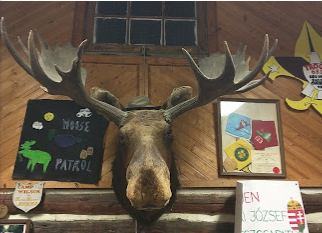
FCI: I like the feel of this one. It’s like a summer camp.
JM: There’s a kitchen. It has everything. No disposal or dishwasher, but it has what you need. Then there’s the facilities storage room with tables and chairs and supplies, things like that, brooms and what have you.
FCI: Have you had weddings here?
JM: We’ve had some inquiries, but have not had groups come in yet. Generally, it’s not for a wedding. It’s for a secondary reception or things like that.
FCI: Nice fireplace. Is that working?
JM: That is currently not functional.
FCI: Is that one of your goals, to get that back up and running?
JM: We kind of operate on a shoestring. Capital expenses are fairly high. That is not at the top of the priority list. It was fully functional in the Seventies when I was a scout here. But the chimney needs some work. It needs to be re-appointed inside and out…
[Exiting the building, Murphy shows me the Sandford Memorial Garden in the front.]
JM: So, Maj. Sanford was on the Board of Directors for many, many years. And when he passed away the flag was put here in his honor. His memorial stone is here as well. The Sanfords were early members and Maj. Sanford was, I think, 26 years on the Board. I don’t know if they were originally from here or just longtime community members. And these are the memorial gardens.
[As we walk around the cabin, Murphy points to the furnace room door in the basement.]
JM: We did clean out the basement. Our furnace, hot water heater, sump pump, and storage. I don’t know if you’ve been here a long time. But, Troop 181 used to set up their Christmas Tree sale up at St. James. All the racks and everything are right down there.
[We look at the outside walls of the cabin.]
FCI: So, what happened in 1982? [Pointing to the year "1982" inscribed on the outside wall.]
JM: That was when the chinking was done. The chinking has to be done every 30 or 40 years. They take it all out and have to put it in.
FCI: So, this is literally a log cabin structure?
JM: Yeah, the logs came from West Virginia. They came down here on the railroad. The stones, I believe, came from Mount Hope for the fireplace. The stones and logs were donated.
[Murphy points to the newly-planted trees on the site.]
JM: And so when I was working with the City Arborist, it was kind of to look at the trees they had left after the sewer project. We lost a number of trees back here from the sewer project. So, I worked with the City Arborist and Parks and Rec to try to make sure the species and the places and locations kind of blended in with the park.
FCI: So these are the new ones here?
JM: We have Redbuds, two Maples, two Pin Oaks, and two Tulip Poplars, the other Oak is on the side here because we lost a tree. We had a buffer between the properties. You can see where the manhole cover is. The sewer line goes straight next to our property.
FCI: Are you going to plant this area in then?
JM: I’m not sure what we’re going to do with this area yet because we still wanted to keep enough open area because the youth do run and play games and we’re trying to kind of work that in.... But we can get this canopied [by trees] over time so it’ll be back to how it was. And the City was kind enough to negotiate 10 trees for replacement that they planted and put in as part of the sewer project. And so, if we don’t get an inch of rain, I have to come down here and make sure there’s at least five gallons of water. I’ll be here early tomorrow morning to water the trees again [Laughs].
FCI: Have you gotten scout troops to volunteer for this kind of landscaping?
JM: We can. But, a lot of things that are normally done are project-oriented with the scouts. So, a scout actually built our little portable fire pit area right over there [Points].
fFCI: Was that an Eagle Scout project?
JM: Actually it was a Girl Scout project.
FCI: Is that the equivalent of an Eagle Scout project?
JM: Roughly – their Gold Award. And so our property goes back here to the stake. [Points.] This is City property all connecting. They’re doing the trail crossings through there.... I keep track of that area too. At least once a month I have to go down into that stream bed to keep all the garbage out. And to rip out the invasive vines. I come through and cut them all down. If you notice, there are not a lot of invasives on this side…
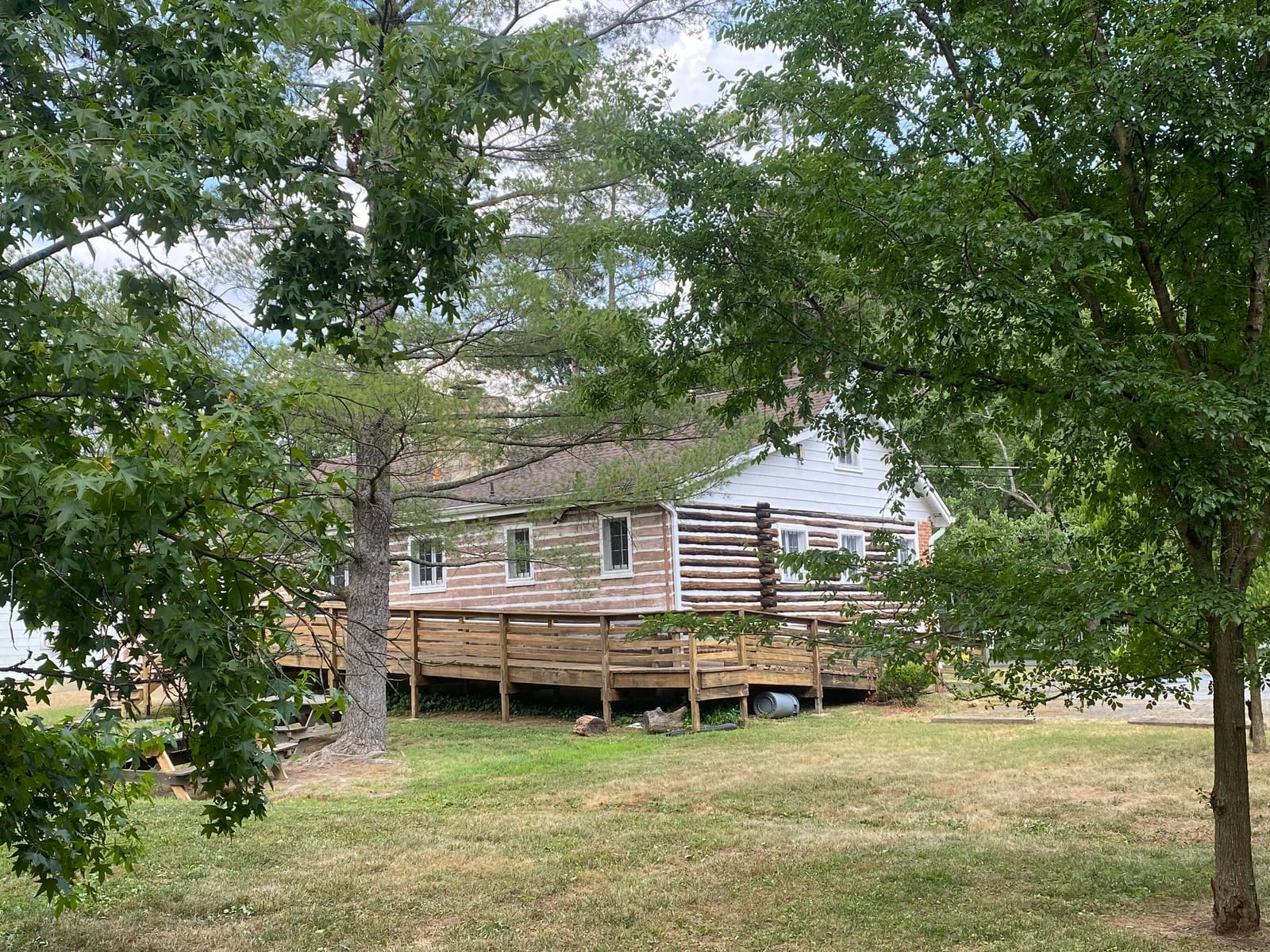
FCI: Do you think about transplanting any of these trees? [Pointing to tree saplings along the stream bed.]
JM: I have not taken anything from here because the stream bed is rather sensitive. I would rather have them grow here. I have a number of Rosebuds and a Sycamore and Tulip Poplars and Maples that I’ve collected from other people’s yards that either are rescue trees when they get planted in somebody’s yard or they go to the Neighborhood Tree Program for VPIS.
FCI: And, are you a member of VPIS?
JM: Yes. I’m on their Board of Directors.
FCI: I’ve seen you guys down at the Farmers Markets with those tree starters.
JM: Yes, we’ve got a nice crew down there. For The Neighborhood Tree Program, we do tree rescue events twice a year, once in April and once in September. We get all the trees we rescue from other people’s gardens and yards, pot them, care for them for a season or two, and then put them up for adoption. You give us a donation of some sort. A dollar and up is fine – and you get a tree.
This year, the City Tree of the Year was the Shumard Oak and through the Virginia Department of Forestry, we got a good deal on 75 bare root Shumard Oaks. So we were giving them away on Arbor Day as well. But, VPIS is different from the Scout House.
FCI: So, in your professional life, what’s your background before you started doing working here?
JM: I was an economist and worked extensively with the UN, with Eurostat, etc., over the years.
FCI: And your academic background?
JM: A degree in Economics from Virginia Tech. Got a job with the government right out of school. Found something I liked. A very niche area I really enjoyed and did that my entire career, until I retired.
FCI: So this job here is keeping you totally busy?
JM: Yes. I’ve done this in retirement.... We’ve had deer and for a while we had beavers and that was a bit of a problem.
FCI: I see you don’t grow hosta or anything the deer might munch up.
JM: We try not to. We lost about 70 small trees in three weeks from beavers. Public Works was having to come by maybe once a week because [the beavers] were building a dam right in front of the storm water facility.
FCI: How did they take care of that?
JM: They’d pull the damn out of the way and eventually the beavers moved on. And my understanding is they’re at Howard Herman Stream Park now. They’ve moved along. [Laughs]. But, unfortunately, when beavers move along, they leave a spiked stick about so tall. [Indicates.] And I was forever cutting down spiked sticks because if somebody down there impales themselves, then I’ve got a problem.
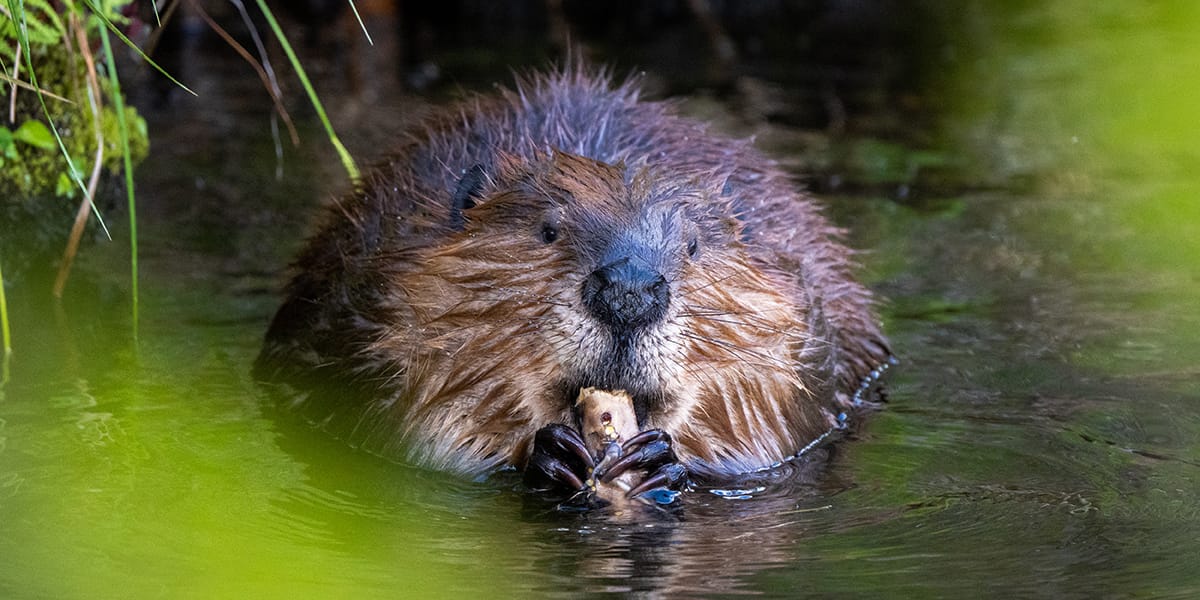
FCI: Have you testified before the City Council?
JM: Not on any matters related to the Scout House. Frankly, or VPIS. For a number of years I was a volunteer on City Boards and Commissions. I was on the Board of Zoning Appeals for a while. Chaired it for a while. Then, as the kids got busy in high school, I got less and less involved. So, they’re grown up and moved out – and moved back [laughs].
FCI: So, what messages would you like to put out to the community?
JM: Well, it’s important to have an organization like this that supports all aspects of youth programs. It’s available for any youth program and when the Community Center closes [for upcoming refurbishment], I’m hoping we get a little bit more spillover from some of the community users. If they’ve been renting rooms from the Community Center, they can come over here. It would be during the winter, so we won’t need air conditioning. [Laughs]. I mean, the heat works fine.
FCI: Have you worked with Rec and Parks to spread that message?
JM: I talked to Danny Schlitt, the Director at Parks and Rec and we offered the facility to them for the Senior Center during that time period because the room is approximately the same size as the room in the Senior Center. But, they found other locations. But, they know we’d be perfectly happy to accept the overflow. Essentially, our focus is on youth, but pretty much any community organization if we have a free space, they’re welcome to rent it. It generally runs about $35 an hour, so it’s very inexpensive.
FCI: It also seems like stewardship is a key idea here.
JM: Especially for me. Stewardship is important. Part of it is history. I mean, I have fond memories of this facility from when I was a youth. I saw it was in need of a little attention when I joined the Board so the first thing I did was to work with them to see what we could do.
[Murphy points to the refurbished handicap ramp along the side and back of the cabin.]
JM: Last year we refinished the handicap ramp that runs up the back and the side, so we have ADA access and we started that on a workday. We have a Spring and a Fall Workday to just take care of what needs to be done. And we get all of our youth – or as many as we can – during those two weekends. We definitely get help. And we didn’t get it done on the Fall Workday.
So, I found a group in D.C. that wanted to have an office picnic and it was Social Service Month. So, I said, “Hey, can you do some social service? I’ll feed you and feed your picnic.” So, I brought the truck and the grills down here and they had about 30 people and they finished sealing that inside an hour and a-half.
FCI: Fantastic.
JM: So, we try. Some Board members are more active than others, it’s like anything else. Because I’m retired, and close by and have an affinity for the building and the property, I do this.
Before you got here, I had to walk the property again to pick up trash. It’s always on the path or the street. Well, the storm drains empty in further up in the City. So, if there’s a bag in the street it washes down and washes out here. So, there’s a lot to be done.
FCI: And you said how important scouting was for you in the Seventies. Can you talk about that a bit?
JM: Well, it certainly provided the opportunity for a lot of independence, a lot of self-management, it’s kind of hard to say ‘discipline’ at that age, but the ability to focus on goals. I think one of the most important things I got from it was the ability to deal with adults. You’re in an adult-type setting, but the youth are in charge. The parents were there to stop you from burning down the forest or making silly mistakes. But, generally, if we forgot something on a campout, we lived without it. That’s the way it goes. It kind of helps you prepare for life. It gives you a little more independence. But that’s just me.
FCI: Anything else you’d like to say?
JM: … It’s a wonderful facility, it’s a great thing to have in a City like this. It’s just not well known. And again, we’re not the best at reaching out and tooting our own horn.
FCI: And, if people wanted to donate?
JM: They could do it off our website. Our website is a little more up to date, than some of our other things. It has email addresses, etc. There’s a phone number but don’t use it because the phone is simply there for emergency purposes so our users can call out if necessary. So please use the email. The [Scout House] does have WiFi.
We got a donation…. to the Scout House for three years of WiFi coverage. So that makes that a little easier for a lot of our groups. During Covid the local Council for Cub Scouts ended up doing their Pinewood Derby inside because the kids could drop off their cars at the door and the adults raced them. And then the kids could pick them up at the back door. You had to make things work during Covid.
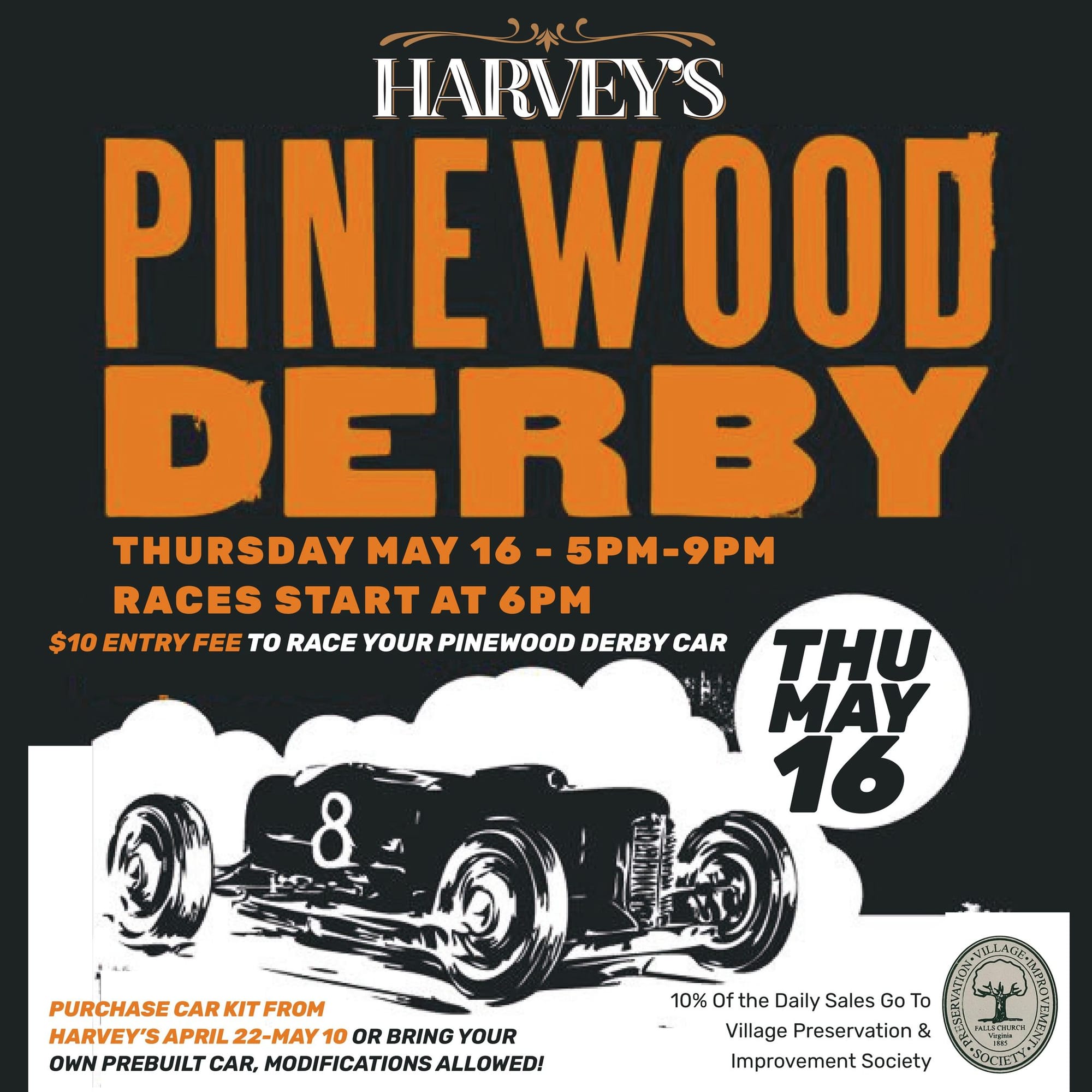
FCI: Yeah, Harvey’s did a Pinewood Derby too, right?
JM: That’s unaffiliated. It was through the Neighborhood Trees Program with VPIS. I made that track for Harvey’s two years ago and my wife is the Membership Chair of VPIS and she’s been working primarily with Thomas Harvey. And the track is right now at a brewery in Alexandria. They had a Pinewood Derby down there using the same track.
So, we have a box of rental cars. I make a couple every year. I’ve got a whole bunch leftover because I used to run the Pinewood Derby for Pack 657 and people would leave their cars. So, we have rentals, so if somebody wants to join in the fun they can rent a car right there and race it. I can’t guarantee they’re going to win, but – [Laughs]. So, yeah, we have the ‘VPIS Rent-a-Wreck’ for that.
By Christopher Jones






Member discussion